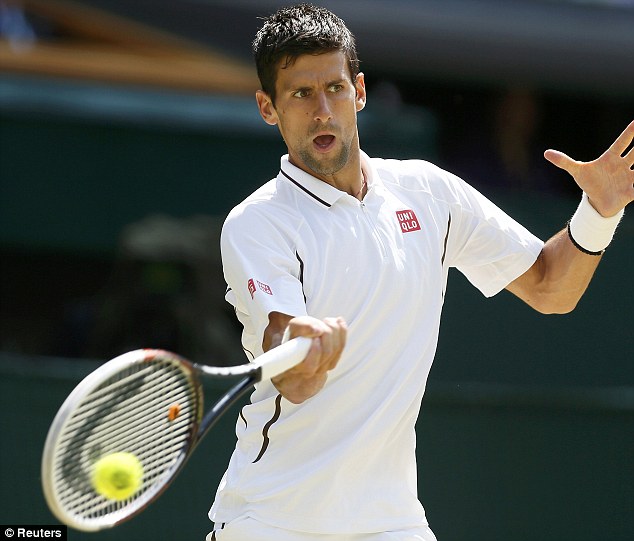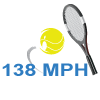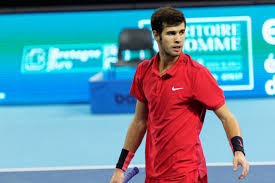ATP Tennis – Karen Khachanov outgunned Novak Djokovic from the baseline, at the Paris Masters 1000.
Karen Khachanov’s straight set, 7-5, 6-4, win over Novak Djokovic at the Paris Masters 1000 came as a shock to the tennis world.
No one expected Kachanov to bring the grind-bot down.
Karen had played exceptionally well at the tournament and his decimation of the established next-gen players, with big-guns, was quite comprehensive. Still no one, however, expected him to bring the grind-bot down.
What worked for Kachanov?
An in-form Djokovic had escaped the experienced clutches of the Maestro in the semi-finals and was on a 22 match winning streak before “the Khachanov” brought him to his knees in the final. So why did Karen Khachanov succeed where the Maestro failed?
Besides being 15 years younger to Roger, Khachanov’s flat-power and attack from the baseline makes up for his lack of experience, variety, and talent as compared to Roger Federer. Karen’s defensive skills for a 6’ 6’’ are quite impressive, and his flat ground-shots force opponents to go on the defensive.

Djokovic was beaten quite comprehensively by Khachanov.
Djokovic was beaten quite comprehensively by a younger and fresh mind with more power, variety, and aggression from the baseline, and little to lose. Novak was outplayed and outmaneuvered by a superior version of self. Without the help from a minor state of high-energy delirium, brought about by a cold or mild fever, Novak might have lost 6-4, 6-2. Novak, therefore, did not lose because of, but despite, a cold.
Novak Djokovic’s workmanlike and easy to replicate style has spawned many imitators.
Every child with a tennis racket should be taught Roger Federer’s playing style. Roger’s style is technically sound, aggressive, and very easy on the body. That style, however, is a product of his insane and uncanny talent and not easy, if at all possible, to teach.
Novak Djokovic’s style is very text-book and workman-like, and, therefore, easy to teach. Novak’s success and easy to replicate playing style has already spawned many imitators younger, stronger, and as hungry as Novak. Hyeon Chung, Borna Coric, and many others play a game similar to Novak’s. Even Khachanov sports a similar baseline game, only with more power and variety. The unique, albeit harmful facet of Novak’s playing style, is his ability to hit from an unbalanced, and bent-out-of-shape, position. It is a uniquely Novakisque ability, suited only for someone with Novak’s elasticity.
How can Novak Djokovic thrive in the mid-30s?
Novak Djokovic will soon find himself in an unenviable position of facing his, more powerful, clones in the later stages of events. Those powerful clones, over time and with increased experience, would prove lethal to Djokovic’s continued domination of the tour.
Novak will need to improve his transition game and net approach to add that extra weapon to his arsenal. We, however, believe that at this stage in his career, it would be difficult, if not impossible, for Novak to improve that particular aspect of his game.
Novak Djokovic, therefore, is pretty much condemned to track balls at the baseline and depend on out-grinding the opponent for, what will soon feel to him, eternity. Djokovic, like Andy Rodick, is quite clueless at approaching the net and equally inept when at it. Rafael Nadal, on the other hand, is not only good at approaching the net but also a consummate volleyer. Nadal, however, is content 10 feet behind the baseline and not used to implementing the net-approach tactic.
What else could Djokovic do?
Djokovic could also abandon the wait-and-watch approach for first-strike tennis from the baseline. It would be a risky proposition but one with a fighting chance of success beyond 32. He, however, must cut points shorter or risk an early retirement, forced upon him by his clones outgunning him from the baseline.

